Lustau, Sherry the Lux
Lustau’s philosophy has remained the same since its inception in 1896: the pursuit of the highest quality in order to offer the market the widest and finest range of sherry.
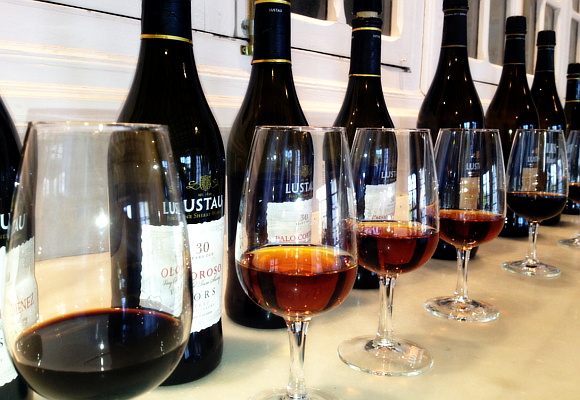
Bodegas Lustau was founded in 1896 by Mr. José Ruiz-Berdejo. It was a modest beginning: José, a court clerk, cultivated the vines on his land, known as Nuestra Señora de la Esperanza. In the house at the vineyard, he produced the wines he later sold to the major exporting wineries. He was a vintner.
Lustau’s philosophy has remained the same since its inception in 1896: the pursuit of the highest quality in order to offer the market the widest and finest range of sherry. In recent years, Lustau has been honoured and recognised with several awards; it was named «Best Spanish Producer» in 2011 at the International Wine & Spirit Competition in London. In 2012, it was the winningest winery in Spainand 7th worldwide. Lustau oenologist, Manuel Lozano, has been named Best Fortified Winemaker of the Year five years in a row by the International Wine Challenge of London.
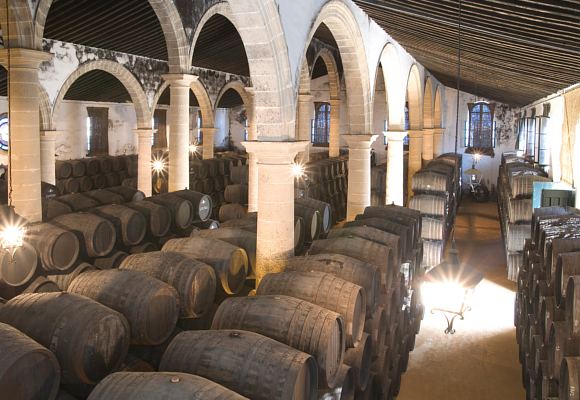
Each year, Lustau vineyards receive roughly 3,000 hours of sunshine, accompanied by relatively heavy rainfalls of about 600 litres per year on average. The landscape of the area consists primarily of white limestone hills, known as “albariza.” Its richness is due to the fact that the region was under water thousands of years ago. To a lesser extent, areas of mud and sand appear near the coastal regions. Lustau has two vineyards in the Jerez region:
- Montegilillo Vineyard. From the “albariza” soil, ideal for growing Palomino grapes. From the land, we obtain the musts to produce Manzanillas, Finos, Amontillados and Olorosos.
- Las Cruces Vineyard. Near the coast. In its sandy soils, we grow Muscatel and Pedro Ximénez grapes intended for the production of sweet wines.
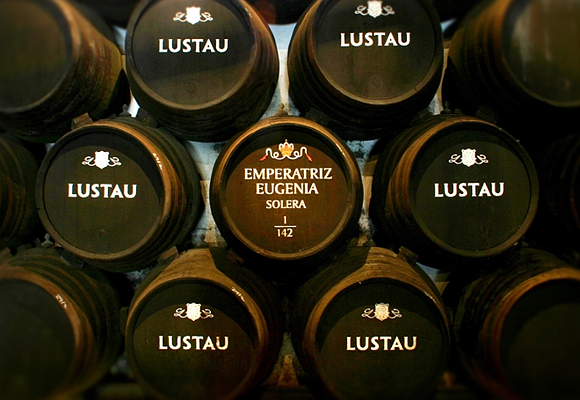
Cathedral-style wineries with vaulted ceilings and immaculate “albero” floors that stabilise the temperature and humidity to maintain the unique microclimate required by Sherries. Lustau is the only winery that produces wines in each of the region’s three cities: Jerez de la Frontera, El Puerto de Santa María and Sanlúcar de Barrameda. The head office is located in Jerez de la Frontera. The Los Arcos winery complex, built in the 19th century, consists of six aging cellars that date from different periods.
Before pressing, the stems are removed. Must is obtained from the pressing process, from which we extract the free-run juice of the initial pressing. The musts are filtered and subjected to a pH correction process to prevent bacterial contamination during fermentation. Once the pH has been corrected pH, the must is treated with sulphur dioxide to prevent oxidation and potential bacterial contamination. Generally, this is followed by “separating” the must, or cleansing it through the process of decantation.
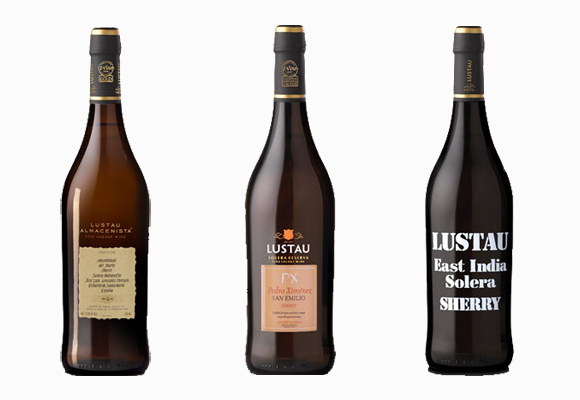
Fermentation is a natural biochemical process through which the sugars contained in the grape must are transformed into alcohol. In late autumn, the “base wine” is ready to begin the racking process, which consists of separating the clear wine from the lees that have settled on the bottom of the tank. Without question, the «Flor del Vino» is the most extraordinary natural element of all of those resulting from the remarkable singularity of Sherries. This unique yeast forms a layer (flor) that covers the surface of the wine isolating it from the air and protecting it from oxidation. The wine’s production of “flor” is only possible within a certain range of alcohol content.
Pedro Ximenez is made exclusively from overripe Pedro Ximénez grapes. Once picked, the grapes are laid out in the sun- bunches being extended on rush mats in the vine until they are practically raisins. This process is known as “soleo”. Moscatel wines are produced with 100 per cent Moscatel de Chipiona grapes, harvested when they are at a high point of maturation.

Wine tasters try every batch of new wine in order to distinguish its characteristics and establish the following classification:
- Finos or Manzanillas: those pale coloured wines of great fineness.
- Olorosos: those wines with greater body and structure.
Sherry is a fortified or «encabezado» wine in the terminology of Jerez wineries. Meaning, additional alcohol is added to these wines to facilitate their extended aging process in American oak barrels. Wines classified according to their age as Finos and Manzanillas are fortified until reaching a total alcohol content of 15º. The wines classified by their age as Olorosos, are fortified until reaching a minimum alcohol content of 17º.
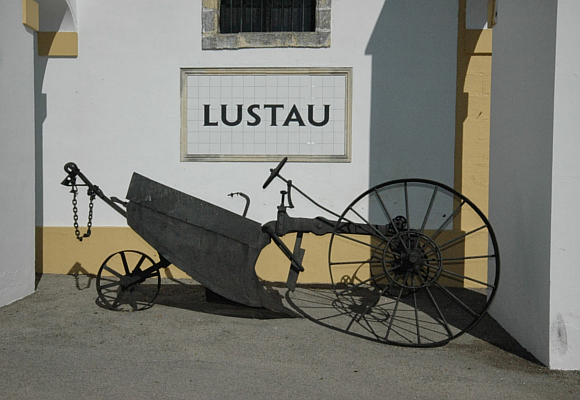
Depending on the final alcohol content, the wine will evolve inside the barrels through one of two aging systems used for sherry:
- BIOLOGICAL AGING:By storing the wine at 15º, a cap of yeast (flor) forms to isolate the wine and protect it from oxidation.
- OXIDATIVE AGING: Above 17º biological activity becomes impossible. Without the protection of the “flor,” the wine will begin the long, inexorable process of oxidation, evident in its progressively darkening colour.
